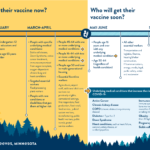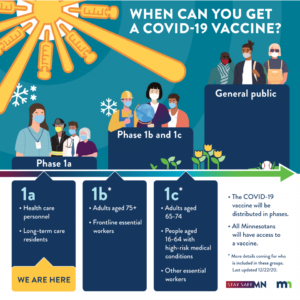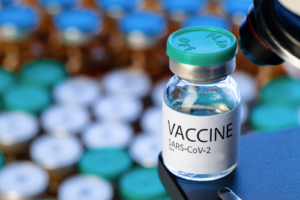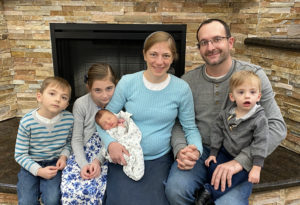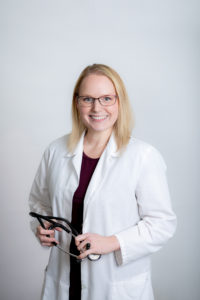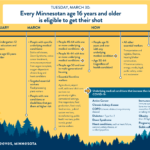 As of March 30, all Minnesotans 16 years of age and older will be eligible to receive a vaccine.
As of March 30, all Minnesotans 16 years of age and older will be eligible to receive a vaccine.
Minnesota has directed providers to prioritize vaccine appointments for people most at risk of getting COVID-19, or those who could develop severe illness if infected. This includes older Minnesotans, those with underlying health conditions*, and those in essential jobs.
How to get your vaccine:
- Sign up for the Minnesota COVID-19 Vaccine Connector. The Vaccine Connector will inform you about vaccine opportunities in your area.
- Use the Vaccine Locator Map to find vaccine providers near you.
- Contact your primary health care provider or a local pharmacy.
- Vaccine Connector users may also be randomly selected to make an appointment at one of the state’s COVID-19 Community Vaccination Program sites. If you are selected, you will be notified by text, email, or phone call by one of the state vaccination partners running those sites: Vault Health, Primary Bio or SpeciaLysts (Solv).
- Your employer may also reach out with information about vaccination opportunities.
Stay safe before your opportunity to get the vaccine:
While all Minnesotans 16 years and older are eligible, not every Minnesotan will be immediately able to make an appointment. It’s important to continue taking easy steps to slow the spread of COVID-19:
- Wear a mask
- Maintain physical distancing
- Wash your hands
- Get a COVID-19 test if you need one. Find a no-cost testing location near you or order an at-home test at no cost.
Get vaccinated at the first opportunity you have. After you have been vaccinated, continue following these safe practices to protect your neighbors as they receive their opportunity to get the vaccine.
At this time, providers should prioritize:
- Minnesotans 65 years of age or older
- Health care personnel
- Long-term care residents
- Pre-k to 12th grade educators and child care personnel
- People with specific underlying health conditions
- Sickle cell disease, Down Syndrome, or oxygen-dependent chronic lung or heart conditions, and those who are in active cancer treatment or immunocompromised from organ transplant
- Targeted essential workers
- Food processing plants
- People with rare conditions or disabilities that put them at higher risk
- People 45 years of age and older with ONE or more underlying medical conditions; or, age 16 and over with TWO or more underlying medical conditions*
- People 50 years of age or older in multi-generational housing
- Essential frontline workers
- Agricultural, airport staff, additional child care workers not previously eligible, correctional settings, first responders, food production, food retail, food service, judicial system workers, manufacturing, public health workers, public transit, Postal Service workers
- Minnesotans 16 years of age and older with any underlying medical condition*
- Minnesotans age 50-64 (regardless of health condition)
- All other essential workforces
- Transportation and logistics, finance, housing/shelter construction, IT/communications, energy, media, legal, public safety, water, and wastewater
https://mn.gov/covid19/vaccine/whos-getting-vaccinated/index.jsp
